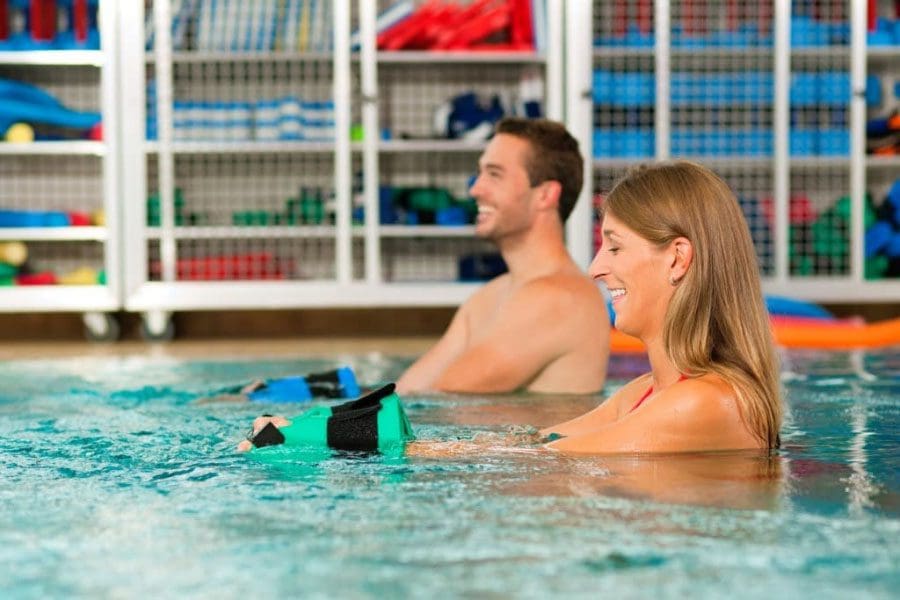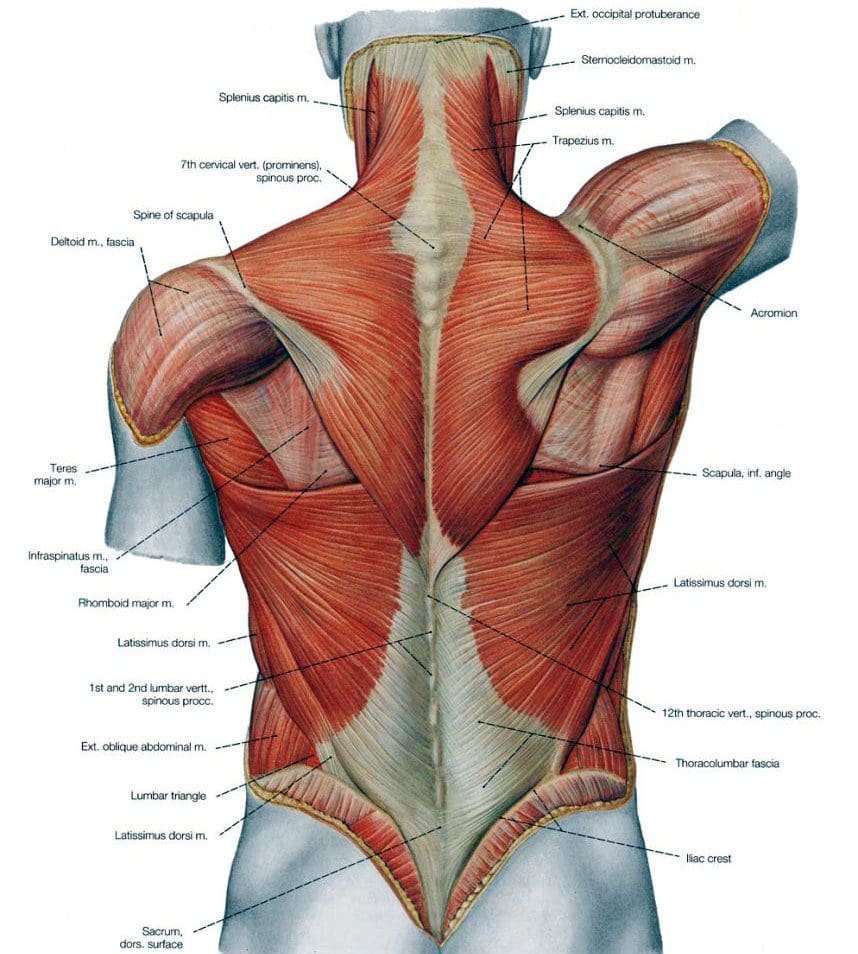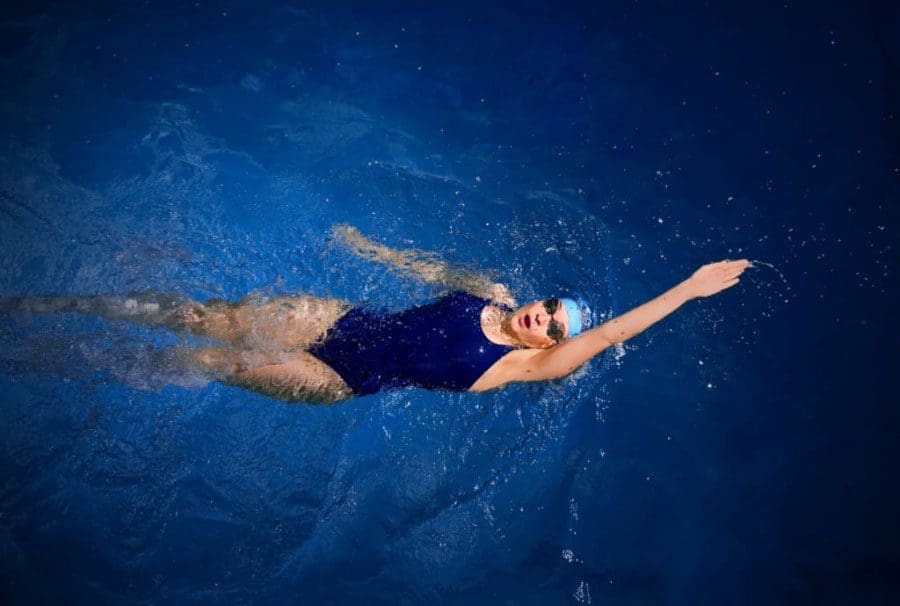Studies reveal that swimming and aquatic exercises can help in relieving back pain. Done properly it is a highly recognized form of cardio exercise as well as injury recovery and rehabilitation, especially when dealing with back pain. Other types of cardiovascular exercise/s are great and are recommended for individuals with back pain that is already being managed. This could be light walking and mild aerobics.
However, those in severe pain and more than likely not in the best shape, cardio can be hard on the body. Swimming is great for all body types, those with weight issues that contribute to their back pain, those that have trouble moving, the young, elderly plus it burns calories, builds muscle, and is very refreshing.
Swimming has been utilized as a non-impact form of exercise and is recommended for individuals in injury recovery, surgery, and for those where performing high-impact exercise/s like running would be painful and dangerous. The buoyancy or upthrust of the water counters gravity decreasing the compression on the spine.
Aqua or hydrotherapy allows cardio activity without increasing or worsening pain, which is very therapeutic. Regular cardiovascular exercises/activities are beneficial for pain reduction. Figuring out and determining the right exercise/stroke for the patient's specific ailment and length of time those exercises should be done without causing fatigue or increased pain is the objective.
Strengthening the paraspinal muscles is essential to help with spinal support and reducing back pain. Utilizing the up-thrust of the water, enables patients to exercise these muscle groups more efficiently and effectively.
Preparation
Wherever the swimming therapy will take place, it is vital that the individual feels comfortable at the location, in the water, knows how to swim as this puts an individual at ease, not worrying about their surroundings and able to focus completely on their therapy/rehab.
If an individual is not a confident swimmer, the therapy can be done in shallow water or a rehabilitation pool and if cleared with a doctor taking swimming lessons with back pain in mind could be part of a therapy program. Once confident in the water warm-up in the shallow end or do some walking/cycling before actual swimming.
Therapeutic Strokes
Strokes for the therapeutic workout will be determined by the doctor, specialist, chiropractor, therapist, etc. These strokes are recommended to protect the spine while keeping pain at bay. Although individual cases are completely unique, and a doctor/therapist could recommend other strokes, the safest strokes found for back pain are the freestyle and the backstroke.
Strokes like the butterfly or breaststroke cause a natural extension/arch in the low back, which can be quite painful. So a patient does not have to lift their heads, which could cause them to arch their backs as well, could benefit using a center snorkel.
Regimen Frequency, Length
Like all forms of exercise, especially when dealing with back pain moderation is the way to go avoiding repetitive/overuse injuries. Soreness after the workout that goes away within a few hours is normal. But if the soreness lasts to the next day, this could the body warning the patient they are doing too much. For swimming, therapists usually recommend three days a week 20 to 30-minute workout. With activity response being used as a guide to progress or decrease the intensity or volume of the exercise. A gradual increase in activity until the patient reaches a workout regimen that fits:
- Age
- Condition level
- Physical ability
Considerations
When swimming or performing any exercise/s the benefits are completely dependent on the individual and back condition. It is difficult to determine how well therapeutic swimming will work, as every individual and the condition/s they are dealing with are different. Individuals with arthritis or spinal stenosis have been shown to do well using hydrotherapy because of decreased spinal compression. Each patient might have to make certain adjustments based on their condition and the doctor's, chiropractor, specialist's treatment plan.
For example, someone with cervical spine arthritis or stenosis could have a difficult time lifting their head to breathe. In this case, they could be instructed to swim using only the backstroke or using a customized stroke so they don't have to lift the head. Every patient needs to try and see what works for their specific condition. What works for one patient, may not work for another. Find out if swimming could be a treatment option for your back condition. With this in mind, finding a form of aqua/swimming exercise that suits you can be achieved.
Back Pain Management
Dr. Alex Jimenez’s Blog Post Disclaimer
The scope of our information is limited to chiropractic, musculoskeletal, physical medicines, wellness, and sensitive health issues and/or functional medicine articles, topics, and discussions. We use functional health & wellness protocols to treat and support care for injuries or disorders of the musculoskeletal system. Our posts, topics, subjects, and insights cover clinical matters, issues, and topics that relate and support directly or indirectly our clinical scope of practice.*
Our office has made a reasonable attempt to provide supportive citations and has identified the relevant research study or studies supporting our posts. We also make copies of supporting research studies available to the board and or the public upon request. We understand that we cover matters that require an additional explanation as to how it may assist in a particular care plan or treatment protocol; therefore, to further discuss the subject matter above, please feel free to ask Dr. Alex Jimenez or contact us at 915-850-0900. The provider(s) Licensed in Texas& New Mexico*








